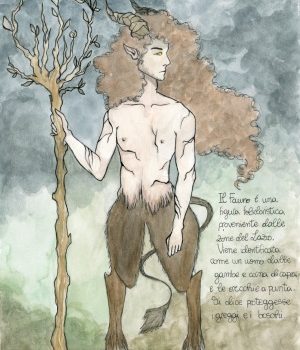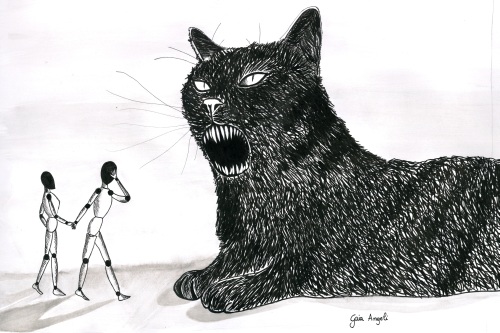Stories

Almost always, folk stories such as fairytales tend to be locally based: the events spoken about happened in such and such a place, and only there, and are totally integrated with the surroundings: when we see a ‘Devil’s bridge’, for example, the story springs immediately to mind, as if bound up with the very image of the bridge.
People thus tend to think of the story as belonging only to that particular place, to them and to nobody else.
Choosing a particular place to represent a folk story is often an arbitrary decision, based on geographical, historical or simply administrative entities factors. Perhaps each small town or village can represent in some way a microcosm, in the sense that each one provides an example of almost every type of experience and story. Taking the Garfagnana as an example, or even the Serchio valley, we can note that more or less every town has its own place where you could meet gli streghi (fairyfolk), each one is likely to have a different fantastically named ‘bogeyman’ character, each one has particular houses or places where you ‘feel’ or ‘see things’, etc.
The village or town can be thought of as a funnel; stories and character types wander around in the world, but in each place they occur in different combinations, and find their own precise, unique and unrepeatable setting, and a name of their own.
Stories thus travel with people along the roads and through time: for this reason we have organised our the materials we have gathered from different points of view.
In the vicinity of the museum there are also interesting journeys along the ancient pilgrimage routes, like the Via Francigena or the so-called Via del Volto Santo (Way of the Holy Face). From year to year we will suggest various options, that can be visualised using our multimedia installations.
The journeys along the ancient pilgrimages routes are also interesting, such as the Francigena or the so-called Via del Volto Santo (to remain in the area surrounding the museum).
Characters and characteristics: variants of symbolic

Folk characters are generally tied to the places to which they belong, and assume local names (like the goblin called Baffardello, the fairyfolk called streghi, the Margolfa, the Rocchetta, and so on); the various features of these characters, on the other hand, have connections across space (they resemble other beings, of other places) and have deep roots in time, going back even to ancient myths.
Thus, the biscio Bimbin is found only in Gorfigliano (Lucca), but its characteristics (a half child/half snake that cries and rolls) are variously attributed (singularly, together, or mixed with other characteristics), to serpents/beings with other names and found in various parts of Italy or Europe, reaching as far back as the Basilisk and the ancient myth of Erichthonius.
Another example is the goblin, which has different names and sometimes different attributes in each place: Mazzariol, Mazzapegol, Mazzamareddu, Salvanello, Sbilf, Troll, Linchetto, Fuddittu, Munaciello.
Its characteristics frequently differ, not only in the same area but even within a single village. Our research unfolds through the study of these variants, each of which is essential for reconstructing the overall picture that embraces an entire culture.
The links between character and characteristics seem to follow their own grammatical rules that should be studied and defined.
All of this contributes to the journey organised in this museum.
Umberto Bertolini
Studies and Sotries of Alberto Borghini
Translation by Linda Barwick, The University of Sydney, Australia
